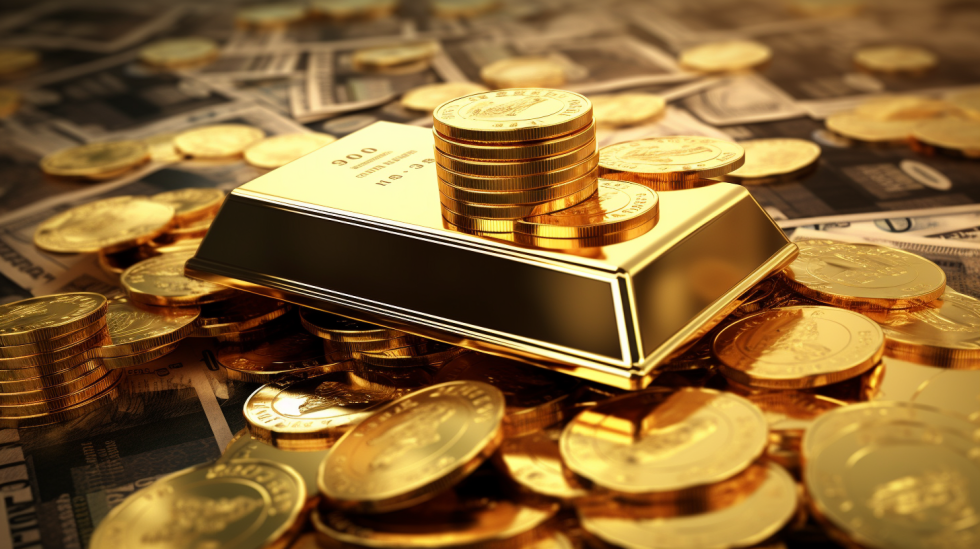The price of gold, often referred to as the “yellow metal,” is influenced by a multitude of factors, making it a subject of great interest for investors, economists, and policymakers alike. This chapter delves into the complex web of variables that impact the price of gold, ranging from economic fundamentals and geopolitical events to market sentiment and supply-demand dynamics. Understanding these factors is crucial for anyone seeking to grasp the dynamics of the gold market.

Supply and Demand Dynamics
Gold Production
One of the primary factors influencing the price of gold is the supply of newly mined gold. Gold is extracted from mines worldwide, and the annual production level can fluctuate due to factors like ore quality, mining costs, and exploration efforts.
Jewelry and Industrial Demand
Gold is not only an investment asset but also a crucial component in the jewelry and industrial sectors. Changes in consumer preferences for gold jewelry and variations in industrial demand for electronics and other applications can affect the overall demand for gold.
Central Bank Reserves
Central banks play a significant role in the gold market. When central banks increase their gold holdings, it can create upward pressure on prices. Conversely, central bank sales can exert downward pressure.
Investment Demand
Investor sentiment and interest in gold as an investment asset have a substantial impact on demand. Factors like economic uncertainty, inflation expectations, and currency devaluation can drive investors to seek refuge in gold.
Economic Factors
Inflation
Gold is often viewed as a hedge against inflation. When inflation expectations rise, investors may turn to gold to protect their purchasing power, potentially driving up its price.
Interest Rates
Interest rates have an inverse relationship with gold prices. When interest rates are high, the opportunity cost of holding non-interest-bearing assets like gold is greater, which can reduce demand. Conversely, lower interest rates make gold more attractive.
Currency Values
Gold is often seen as an alternative to fiat currencies. A weakening currency, especially the U.S. dollar, can lead to higher gold prices as investors seek to preserve wealth.
Economic Performance
The overall economic health of a country or region can impact gold prices. Economic instability or a downturn may boost gold demand as a safe-haven asset.
Geopolitical Events
Political Uncertainty
Geopolitical events like elections, conflicts, and diplomatic tensions can create uncertainty in financial markets. Gold often benefits from such uncertainty as investors seek safety.
Trade Disputes
Trade tensions and disputes between major economies can impact global economic stability and influence gold prices.
Regulatory Changes
Changes in regulations related to gold trading or ownership can have a significant impact on the gold market.
Market Sentiment and Speculation
Speculative Trading
Speculators, including hedge funds and individual traders, can drive short-term fluctuations in gold prices based on their perceptions of market conditions.
Psychological Factors
Psychological factors like fear, greed, and market sentiment can influence short-term price movements. Extreme sentiment can lead to overbought or oversold conditions.
Technological Advancements
Technological developments can impact the gold market. For example, advancements in mining technology may lead to increased production, while innovations in electronic components may influence industrial demand.
Environmental Concerns
The environmental impact of gold mining has become a significant consideration. Concerns over responsible mining practices and their ecological consequences can affect the reputation and supply chain of gold producers.
Factors Affecting the Cost of Production
Energy Prices
Gold mining is an energy-intensive process, so changes in energy prices can influence production costs and potentially impact supply.
Labor Costs
Labor is a substantial component of mining costs. Labor disputes or changes in labor regulations can affect the economics of gold mining.
Market Dynamics and Sentiment
Speculative Trading
The gold market is influenced by speculative trading activities. Traders, both institutional and retail, engage in buying and selling gold contracts based on their short-term price expectations, which can lead to rapid price movements.
Market Liquidity
Market liquidity, or the ease with which gold can be bought or sold without significantly affecting its price, plays a role in price stability. Liquid markets tend to have smoother price movements.
Investment Trends
Investment trends and shifts in asset allocation by institutional investors can impact the demand for gold as an asset class.
Supply-Side Factors
Gold Production
Gold production is influenced by factors such as mine development, exploration success, and geopolitical stability in mining regions.
Recycling and Scrap Supply
The recycling of old gold jewelry and electronic components can add to the supply of gold. Economic conditions can influence the willingness of individuals to sell scrap gold.
Central Bank Policies
Gold Reserves
Central banks play a dual role in the gold market as both buyers and sellers. Changes in central bank gold reserves can signal shifts in monetary policy and influence market sentiment.
Interest Rates
Central banks’ interest rate decisions can impact the attractiveness of gold relative to interest-bearing assets. Lower interest rates can make gold more appealing.
Conclusion: A Multifaceted Gold Market
The price of gold is shaped by a complex interplay of factors, ranging from fundamental supply and demand dynamics to economic, geopolitical, and market sentiment considerations. Investors in gold must navigate this intricate landscape, understanding that gold’s value extends far beyond its intrinsic worth—it also reflects the ever-changing economic and geopolitical landscape.
While no single factor dictates gold’s price, the enduring appeal of this precious metal as a store of value and a hedge against uncertainty ensures its continued relevance in the global financial system. As investors and markets continue to evolve, so too will the multifaceted dynamics that determine the price of gold.



